
Feel free to add tags, names, dates or anything you are looking for

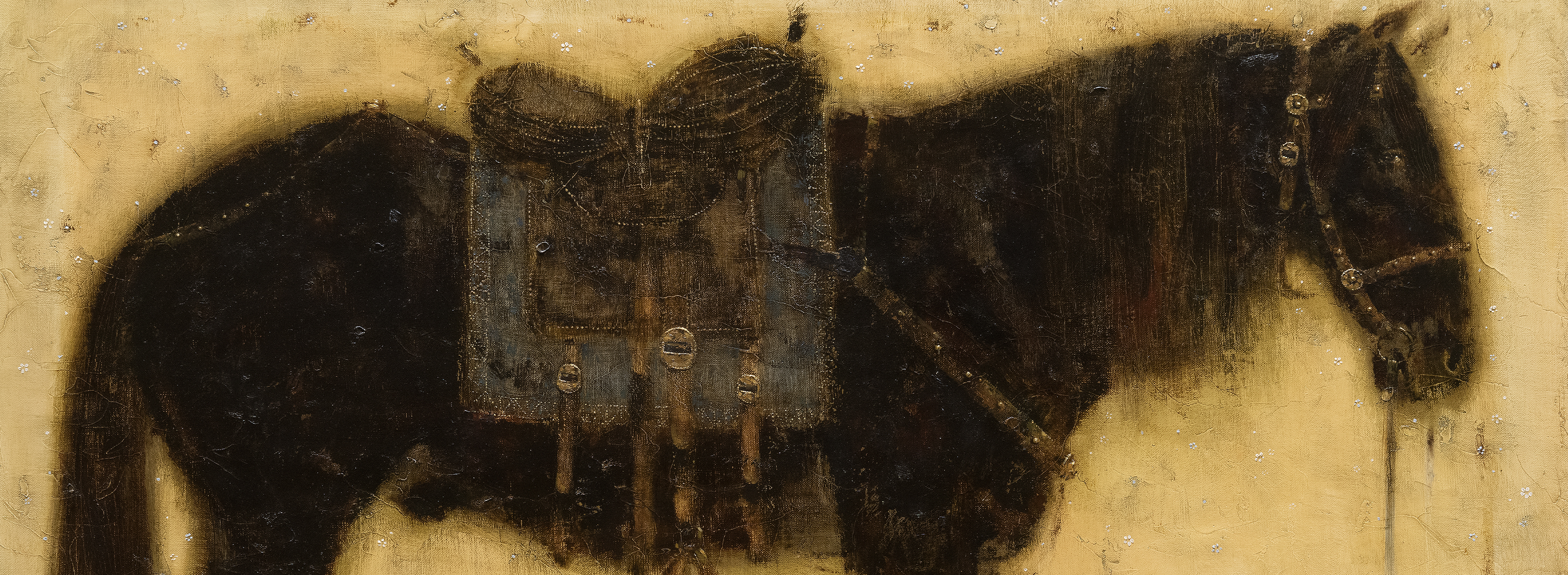
Irakli Sutidze's art provides undeniable evidence that the author's style emerged and developed from his inner world. He painted as he lived, and lived as he painted. He stood at the center of both the surrounding reality and the world invented by him. As such, inanimate objects and living beings around him lived the life he created for them.
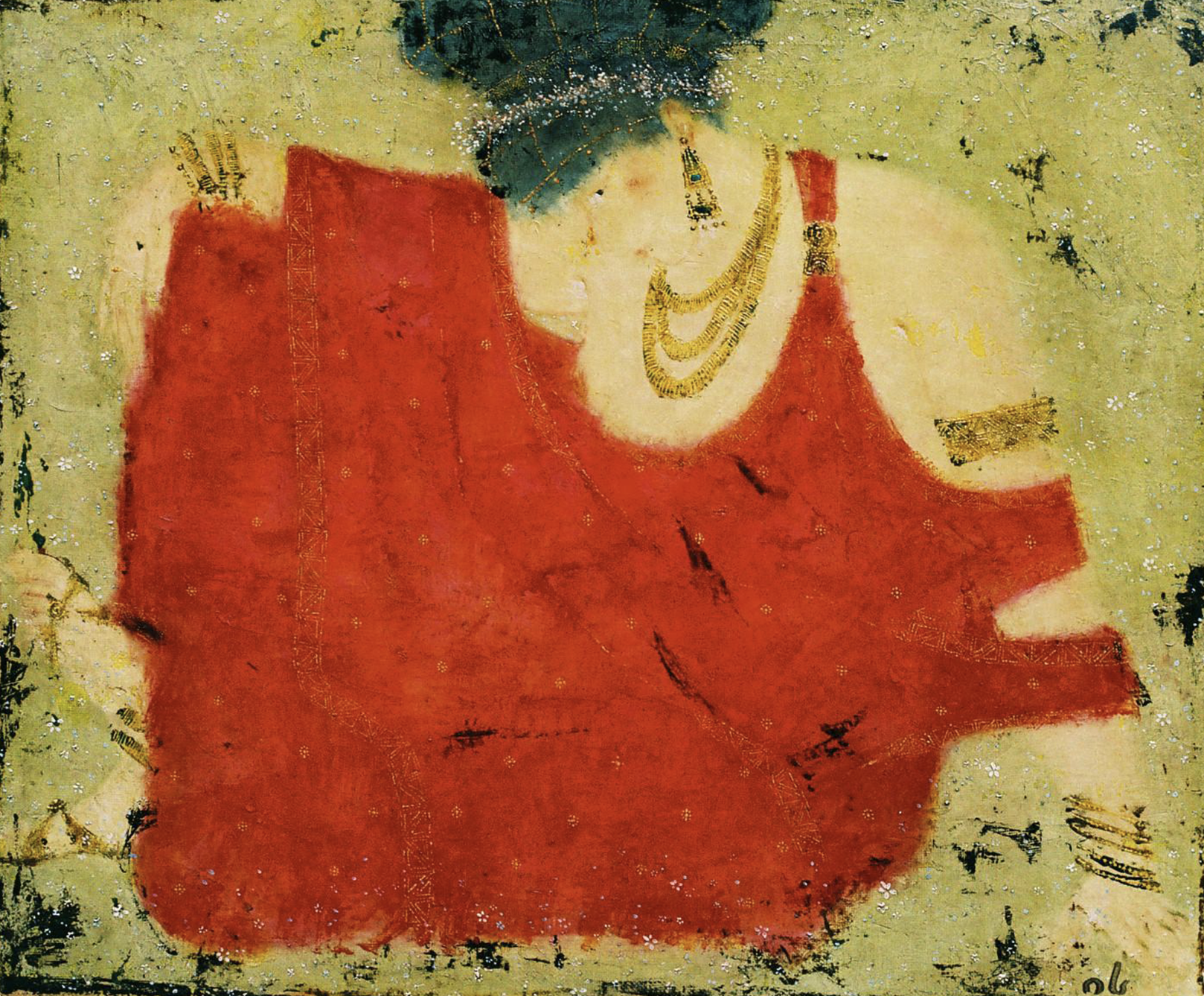
Irakli Sutidze. Flora. Oil, canvas. 70x90. 1998

Irakli Sutidze. The "Chief's" Horse. Oil, canvas. 91x117. 2009
Irakli Sutidze was born in Zestaponi in 1954. He graduated from the Faculty of Fine Arts of the Tbilisi State Academy of Arts in 1981, at the beginning of the decade that brought the collapse of the Soviet Union and Georgia's independence. These significant historical events resulted in the revival of Georgian art; seeing a new generation of sharply individualistic young painters appearing on the scene, quickly earning the nickname "Artists of the 80s." Sutidze was popular from the very beginning. He presented posters as his diploma work (supervisor - Ir. Gordeladze), but later gained recognition as a painter. Sutidze’s canvases are housed in private and museum collections both in Georgia and abroad.

Irakli Sutidze. Kukushka (The Locomotive). Oil, canvas. 78x130. 2009
Sutidze created figurative artwork. Landscape, still life, works of the animalistic genre, biblical themes. His paintings cover a wide range of genres and topics, and yet, it is a single world in which everything is interrelated, though it stands far from the characterizing features of the mentioned genres.
He was a horseman and painted horses; he was a fisherman and painted fish; he was a husband and painted his wife. But everything in his life and paintings was transformed artistically - his wife and muse (the artist Ketevan Kordzakhia) turned into the wife of Devi (a character of Georgian fairy tales), while the Devis on Irakli's canvases most likely depict the author. Everything was transformed in the prism of his imagination, even trivial objects - glass bottles or clay pots - acquired a special life under his brushstrokes. Ordinary things like the saddles and wide-brimmed hats he used continue existence in his house even today, after his death - not only on canvases, but also in life.

Irakli Sutidze. Mountain Village. Canvas, oil. 65x91. 2019. This work is part of ATINATI Private Collection
When looking at Irakli Sutidze's work, one gets the impression that he was looking at the model, but saw beyond it; noticed what was significant and filtered the rest. He adorned the objects he observed with the symbols he saw in them, transforming nature into a fairy tale. Indeed, it seems that he appreciated the world like a fairy tale. This is how he lived and perceived the universe; that is why the real world was transformed into myths in his work. Sutidze's canvases usually depict a single object – a train, an ark, a fish, a zebra... The object takes up the entire surface of the canvas and is formally enclosed in a quadrangular frame. However, that feeling of enclosure does not arise, as the items, immersed as they are in gold, red, or growing out of any other color, live their own lives; they breathe soundlessly in their space, and live like fish in an aquarium.
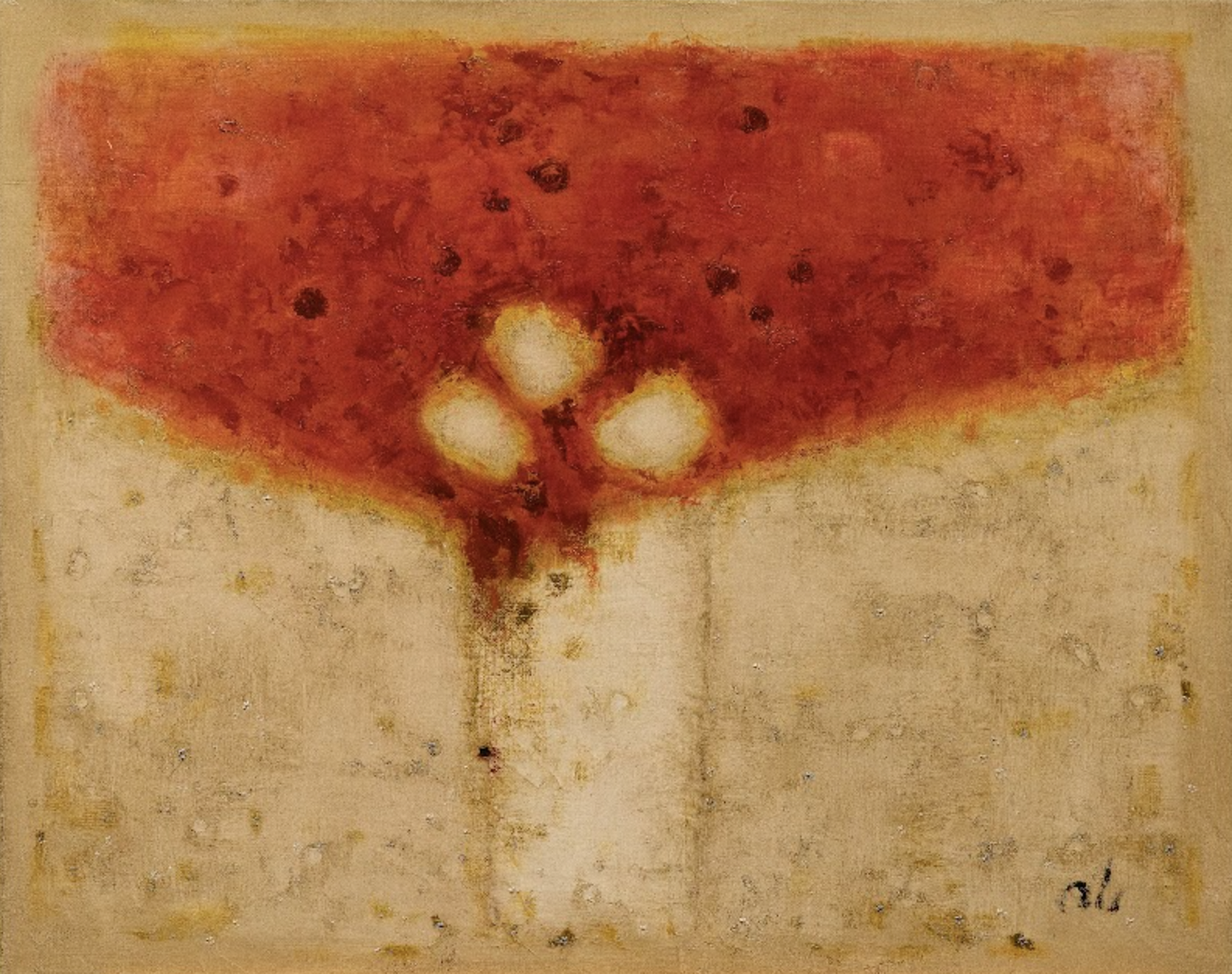
Irakli Sutidze. Red Tree. Canvas, oil. 52x65. 2020. This work is part of ATINATI Private Collection
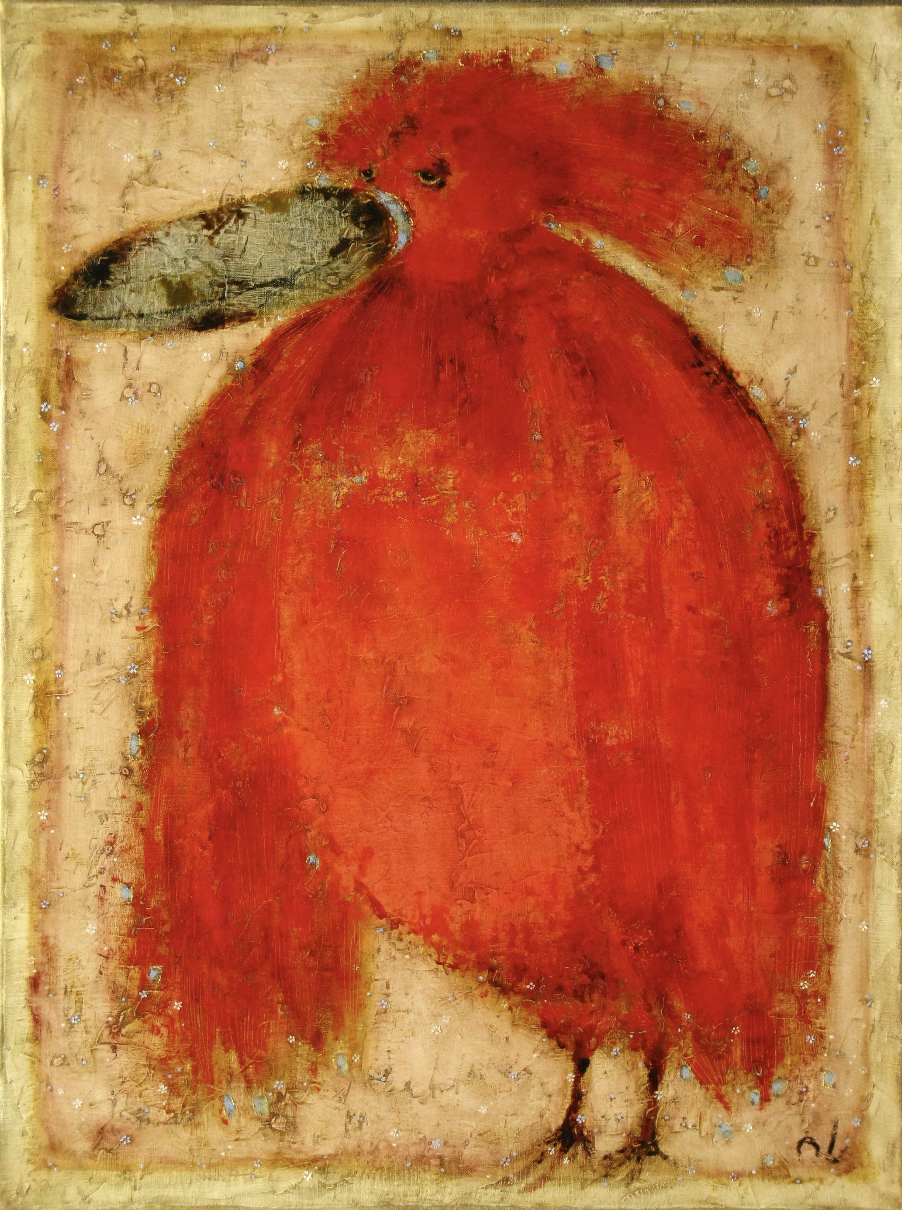
Irakli Sutidze. The Strange Bird. 104x78. 2014
Sutidze frequently painted biblical themes, with a unique painting style that reveals timeless ideals that can be found everywhere.
If, like Sutidze, we somehow manage to feel the abstract nature of the model beyond it, in Sutidze's paintings, the bell on the neck of the dozing bull will jingle, the jewels of Devi's wife will shimmer, the steamer will whistle... These animals, the stagecoaches, the Devis and their wives, along with elephants and strange birds, horses, and arks, live in the fairy-tale cities created by the artist. Where knights in helmets are riding horses, kings are holding cups; where red and black, kind and evil trees stand, and fairy-tale characters look at us from somewhere far away, they themselves discover something.
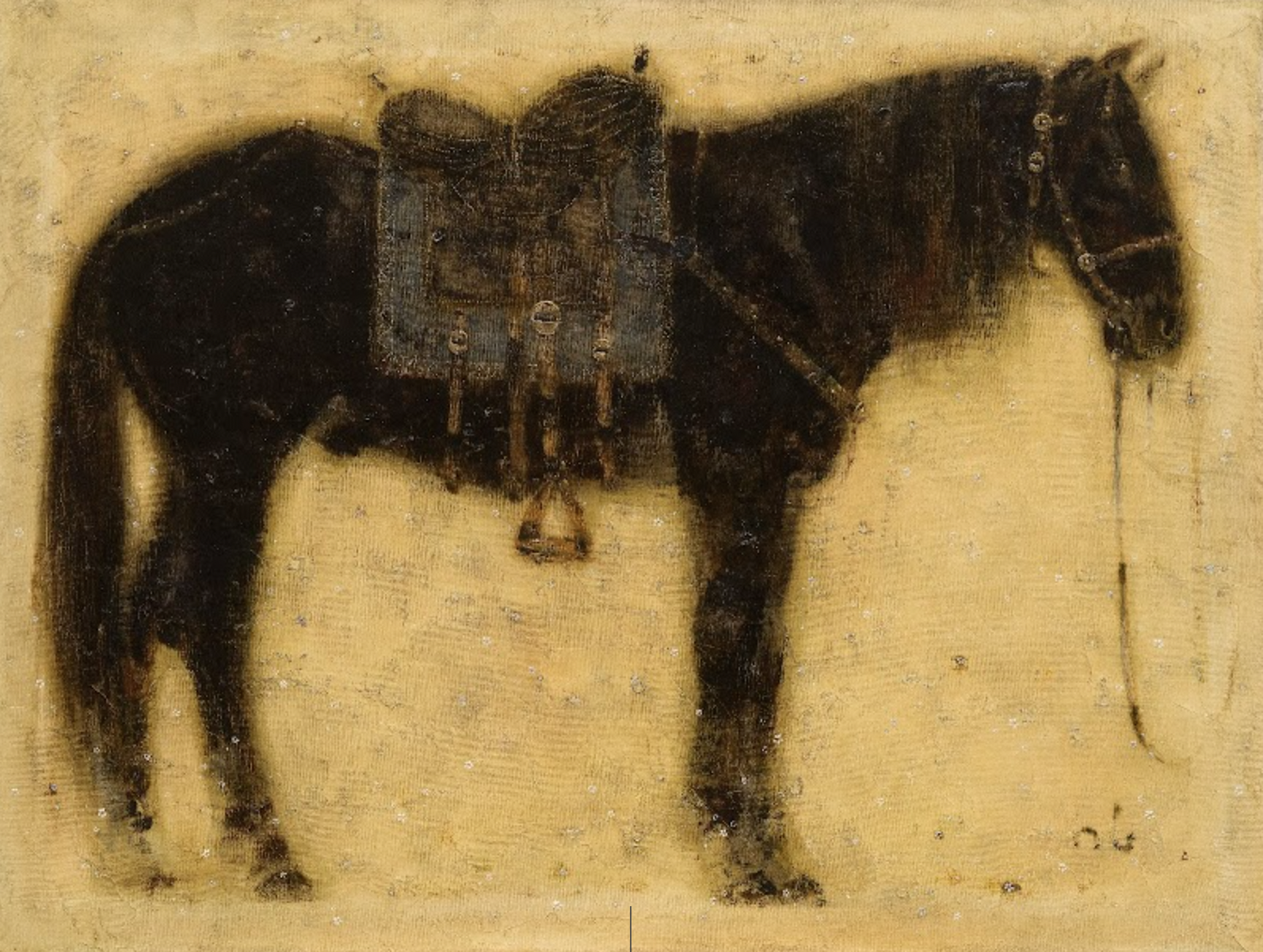
Irakli Sutidze. The Kabarda Horse. Canvas, oil. 78x104. 2019. This work is part of ATINATI Private Collection
In Sutidze's works, time is generalized as it is in fairy tales. He painted what he truly loved, things he was intimately familiar with. He spent his life with his "muses"—wife, horses, rivers. It is uncommon to see such a unity of actual life and the fictional artistic world; it is unusual to feel the presence of the past in works in which such a modern, expressive language is used.